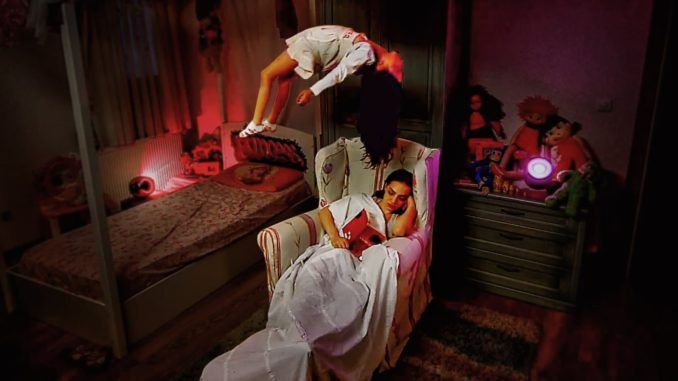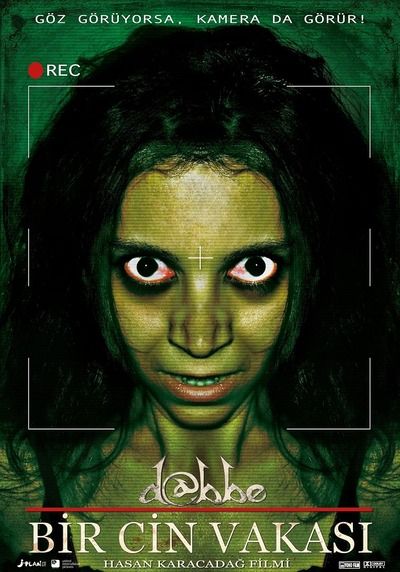
Rating: C
Dir: Hasan Karacadag
Star: Nihan Aypolat, Koray Kadiraga, Su Burcu Coskun, Pervin Bagdat
a.k.a. D@bbe: Bir Cin Vakasi
The original subtitle on this installment translates as “A djinn case”, and that’s probably a little more accurate than the possession theme suggested by the official English title. Initially, it seems like that might be the situation, with Ceyda (Avpolat) troubled psychologically, and affected by bouts of sleep-walking. This is why her husband Sinan (Kadiraga) agrees to have cameras installed around their house, in order to record the nightly events. However, it gradually becomes clear that these are not particularly focused on Ceyda, with their young daughter Burcu (Coskun) also experiencing… paranormal activity: yeah, the overall structure is not dissimilar to that movie. These events range from objects moving to her seeing a dark figure in her room.
They persist, even when none of the family is at home, and eventually lead them to bring in a specialist. He discovers a curse has been laid on the family’s home, including the placing of a spell behind a mirror. [If that sounds familiar, this specific occult method was re-cycled in Siccin 3: Forbidden Love] They figure out this could only have been done by someone with free access to the house, although it turns out things are not quite what they initially seem. However, please do not ask me what they actually are, because I have to say, the final twenty minutes of this are not good at explanations. Something about the end of days, although how Ceyda fits into it, is far from clear.
 It’s a random grab-bag of good and bad elements, with the same aspect sometimes delivering on both ends of the spectrum. For example, the incidents in Burcu’s bedroom range from the painfully obvious “dangling shit on a piece of string” to the genuinely startling. If you don’t jump when the kids’ playtime is rudely interrupted, may I suggest a medical check-up, because you might already be clinically dead. The same range is true for the performances, and elements of the script as well. There’s a whole sub-plot about a friend of the family going to Derünce village to investigate a case of mass possession. In a film lasting nearly two hours, this side-quest feels like filler.
It’s a random grab-bag of good and bad elements, with the same aspect sometimes delivering on both ends of the spectrum. For example, the incidents in Burcu’s bedroom range from the painfully obvious “dangling shit on a piece of string” to the genuinely startling. If you don’t jump when the kids’ playtime is rudely interrupted, may I suggest a medical check-up, because you might already be clinically dead. The same range is true for the performances, and elements of the script as well. There’s a whole sub-plot about a friend of the family going to Derünce village to investigate a case of mass possession. In a film lasting nearly two hours, this side-quest feels like filler.
It does tie in to the “M” symbol, scrawled repeatedly by Burcu on a whole ream of paper in one of the film’s best scenes. Turns out to be short for “Majnun”, and is used to mark those who are possessed. With a link to Hitler, because why not? This illustrates the film’s main problem: Haracadag seems to be stuffing too many ideas in, regardless of whether or not they fit the scenario he previously established. While some of the individual moments are quite effective, the whole thing becomes a bit of a mess, especially towards the end. A little bit more explanation there would have gone a long way to enlightening foreign viewers at least, who may well be left wondering what the actual fuck.
